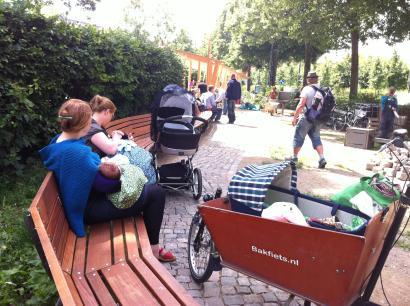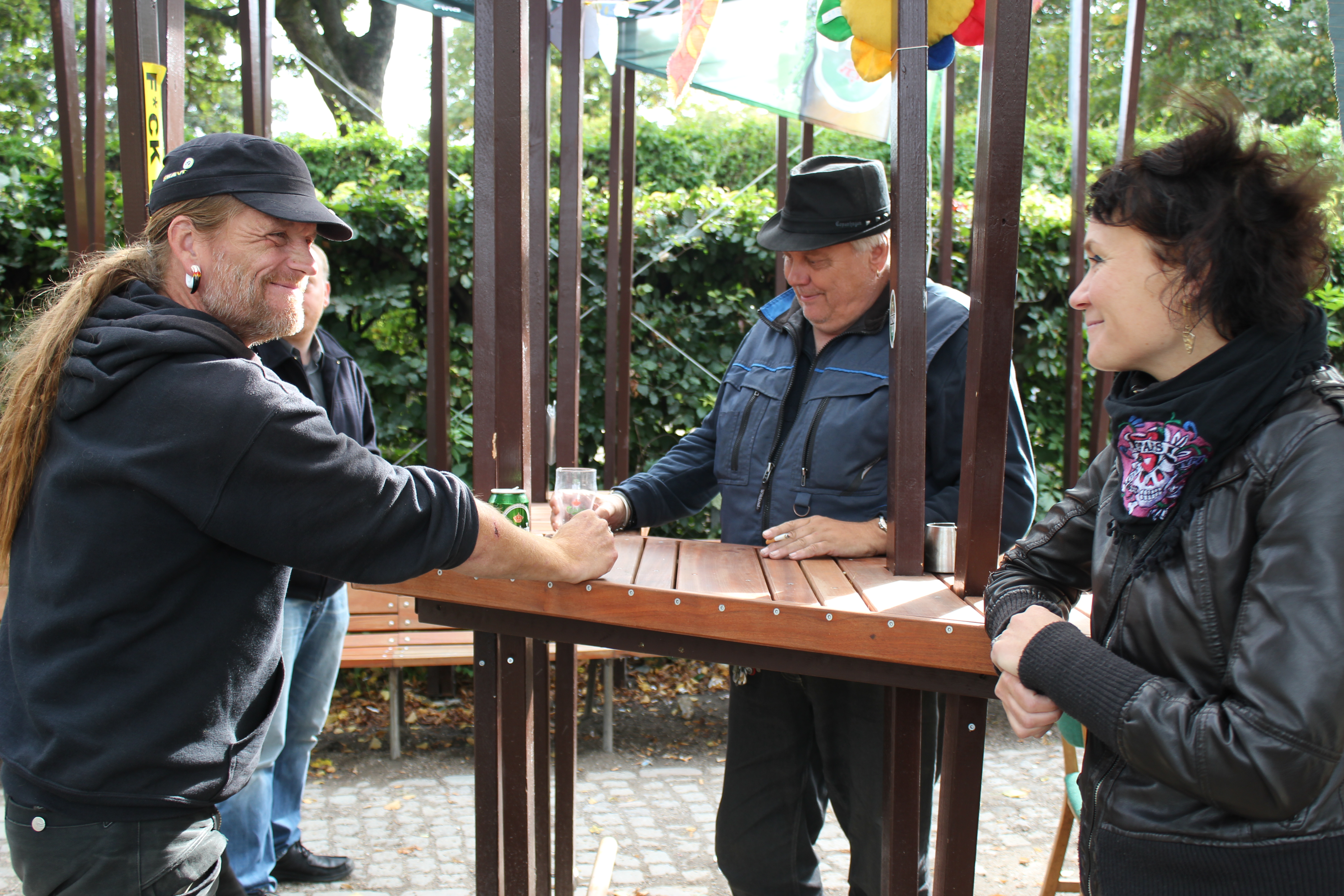ENGHAVE MINIPARK
In the summer of 2010, Enghave Plads was excavated in connection with the establishment of Cityringen – the new Copenhagen Metro City Ring. Enghave Minipark was to be a temporary urban space created to rehouse the socially marginalised people in the local area until 2018 when Enghave Plads will be reestablished. The project was undertaken by Spektrum Arkitekter, visual artist Kenneth Balfelt, Vesterbro Local Committee, architect Chalotte Vad, urban sociologist Simon Mertner Vind and most important of all: The local beer-drinking Vesterbro community.
The project shows how by directly involving marginalised groups you can create sustainable solutions with a new method for developing urban spaces that involve both the socially marginalised population and other citizen groups in a change process.
Quality of Life & Accessibility
The temporary city park in Vesterbro, Copenhagen, Enghave Minipark, was used by a diverse group. According to Vesterbro Local Committee, particularly the local beer-drinkers were successfully involved in the project and therefore gained a very unique sense of belonging and pride in the place. People from the social services go and talk with the beer drinkers in the park, who say that they use the facilities like a community ‘social welfare office’ and help each other. Besides getting a space for the local beer drinkers, many other groups also use the park, including families with children, young people who are partying and people on their way home from work. The diverse group of users of the urban space feel safe and welcome.
“We’ve never heard of any problems in the park, neither from the local club SSB [Studenter Settlements Boldklub] nor from others. It is also a place where children are not afraid to come. We have investigated it in connection with an analysis of safety of children in Vesterbro.” Erling Hagemann, Vesterbro Culture Centre, Danish Ministry of Social Affairs 2010.
Identity
Visual artist Kenneth A. Balfelt, who was the initiator and key person in the development of the project kept a process log and conducted interviews with local beer drinkers during the process. In 2010, the report ‘Byen som dagligstue? Byfornyelse med plads til socialt udsatte’ (The city as your living room? Urban renewal with room for socially marginalised people) was prepared by the team behind Enghave Minipark, published by the Ministry of Social Affairs. According to the evaluation of Enghave Minipark, the project shows how by directly involving marginalised groups you can create sustainable solutions with a new method for developing urban spaces that involve both the socially marginalised population and other citizen groups in a change process.
“[...] people with their own context of understanding can contribute just as much as professionals. The beer drinkers are ‘super users’ of this type of urban space. They sit there most of the day, year round. No urban planner, anthropologist, architect or local officer has the same experience in the public space. Our job was therefore to articulate this knowledge and translate it into physical and process-related solutions – and making them aware that they possessed this knowledge.” Kenneth Balfelt, visual artist.

About the case
The thing that made the Enghave Minipark project so special was the remarkably successful involvement of users that resulted in an urban space that accommodates the needs of different users. The project serves as a ‘rehousing’ of the many socially marginalised people in the area, who used Enghave Plads as a place to meet. Requests for ‘green’, ‘natural’, ‘robust’ and ‘room for all’ was incorporated into the final project which featured a 45-metre bench, a covered pavilion, a public convenience, a grill, a fountain and an urban garden. Besides having the users develop and build the facilities, they were also the ones running and maintaining the place until Enghave Plads was reestablished when the metro construction was complete.
